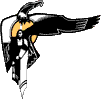Contents
Preface
1. Introduction: Sustaining Indigenous Languages: Looking Back, Looking Forward
Inge Genee and Conor Snoek
2. Why I Became an Advocate for Indigenous Language Revitalization
Jon Reyhner
3. Centering Indigenous Ways of Knowing in Collaborative Language Work
Wesley Y. Leonard
4. First Nation Student Reticence:
Sorting out Positive Traditional Ways
from a Negative Boarding School Legacy
John Peacock
5. Anishinaabewin: An Epistemological and Research Method Framework
Sharla Mskokii-Kwe Peltier
6. At the Convergence of Theory and Practice: Nourishing the Learning Spirits of Indigenous Language Teachers in Schools
Heather Blair, Belinda Daniels, Noreen Buffalo, and Velvalee Georges
7. Collaborative Language Planning Project in Montana
Mizuki Miyashita, Richard Littlebear, Susan Penfield,
Alyce Sadongei, Leora Bar-el, and Irene Appelbaum
8. The Hopilavayi Summer Institute:
A Tribal Model of Assistance for
Ancestral Language Teacher Preparation
Sheilah E. Nicholas
9. Language Planning: Planning a Future for Your Language
Suzanne Gessner and Aliana Parker
10. Waabandan miinawaa Idan Anishinaabaateseg:
See It and Say It Anishinaabemowin Movies
Ricky W. DeFoe, Janis Fairbanks, and Margaret Noodin
11. Creation of Language Tests for Heritage Learners
of the Labrador Dialect of Inuktitut
Marina Sherkina-Lieber
12. Resources for and about Indigenous Languages:
Examining Online Collections
Leora Bar-el, Megan Stark, and Samantha Prins
13. Blackfoot Word Melody of Second Language Learners
Naatosi Fish and Mizuki Miyashita
14. Blackfoot Blogs and Boutique Languages
Eldon Yellowhorn (Otahkotskina)
15. Inuktitut Second Language Learning in an Urban Setting: A First-Hand Account
Inuktitut Uqausituqarinngitamnik Ilinniaqpallianira
Qablunaat Nunangani
Anna Logie
The
Contributors
| 
